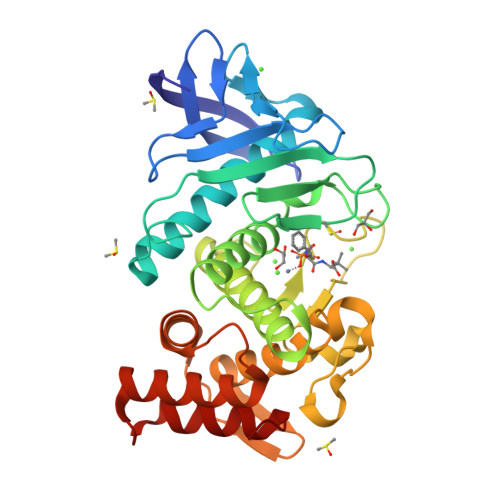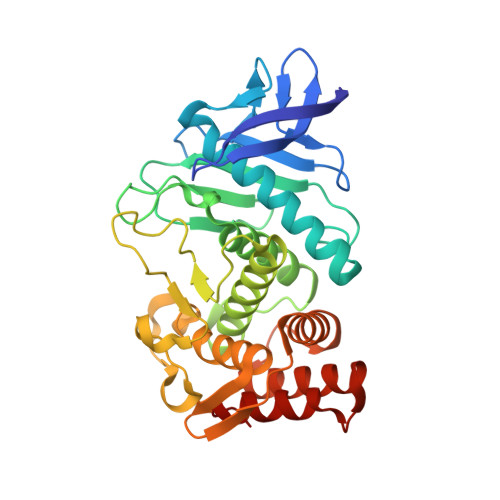Thermodynamics of protein-ligand interactions as a reference for computational analysis: how to assess accuracy, reliability and relevance of experimental data.
Krimmer, S.G., Klebe, G.(2015) J Comput Aided Mol Des 29: 867-883
- PubMed: 26376645
- DOI: https://doi.org/10.1007/s10822-015-9867-y
- Primary Citation of Related Structures:
5DPE, 5DPF - PubMed Abstract:
For a conscientious interpretation of thermodynamic parameters (Gibbs free energy, enthalpy and entropy) obtained by isothermal titration calorimetry (ITC), it is necessary to first evaluate the experimental setup and conditions at which the data were measured. The data quality must be assessed and the precision and accuracy of the measured parameters must be estimated. This information provides the basis at which level discussion of the data is appropriate, and allows insight into the significance of comparisons with other data. The aim of this article is to provide the reader with basic understanding of the ITC technique and the experimental practices commonly applied, in order to foster an appreciation for how much measured thermodynamic parameters can deviate from ideal, error-free values. Particular attention is paid to the shape of the recorded isotherm (c-value), the influence of the applied buffer used for the reaction (protonation reactions, pH), the chosen experimental settings (temperature), impurities of protein and ligand, sources of systematic errors (solution concentration, solution activity, and device calibration) and to the applied analysis software. Furthermore, we comment on enthalpy-entropy compensation, heat capacities and van't Hoff enthalpies.
Organizational Affiliation:
Department of Pharmaceutical Chemistry, University of Marburg, Marbacher Weg 6, 35032, Marburg, Germany. krimmer@staff.uni-marburg.de.























